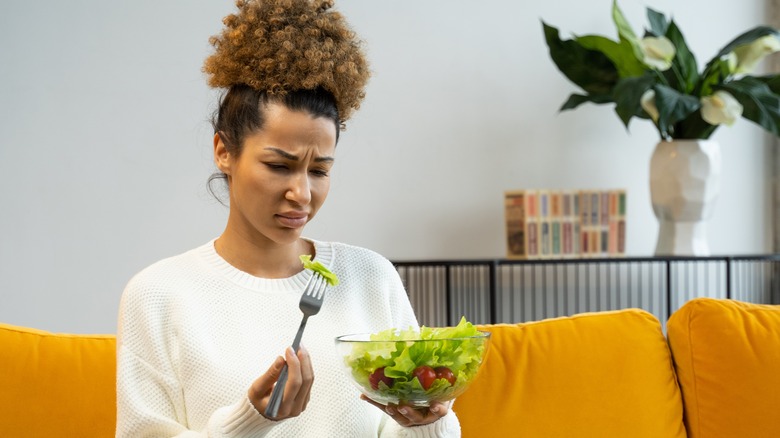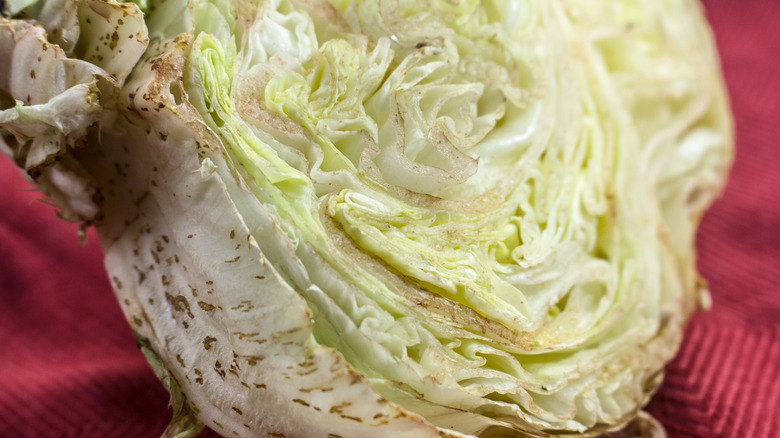Can You Eat Lettuce That's Turning Brown?
As we all strive to better prevent food waste, we may be more likely to consider eating a few products we neglected in the back of our fridge. Whether you're returning to last week's leftovers or a couple of now-wrinkly vegetables, we applaud your efforts. However, it is best to know when your food is past its prime, so you don't accidentally ingest a product that puts you at risk for your health.
Many of us fill our carts with vegetables to get our vitamins and add more sustenance to our meals; however, we all fall short sometimes. And, with E-coli recalls and warnings of germy leaves (per Food Safety News), you may be especially wary of that head of lettuce you ambitiously purchased. According to the CDC, eating raw greens without proper preparation can increase your risk of getting foodborne illnesses like E. coli, Salmonella, Listeria, and Cyclospora. But this doesn't mean you should stop eating your favorite salad recipes or cease topping your sandwiches with fresh lettuce.
There are plenty of ways to reduce exposure to bacteria: washing the leaves with clean hands, removing any bruised or torn, and keeping them away from other foods to avoid cross-contamination (via The View from Great Island). However, if you take these precautionary steps and still notice a few brown spots on your lettuce, should you still be quick to throw it out?
Browning lettuce isn't grounds for tossing it away
You may want to halt and exercise caution before throwing away your heads of lettuce in the trash just because of signs of browning. According to LiveStrong, this isn't necessarily associated with food poisoning. Lettuce leaves can turn this muddy color for harmless reasons, such as bruising, oxidation, or "tipburn," which indicates they've been grown under stressful conditions.
If the brown parts on your lettuce look more like tiny dots than a larger patch, it could signify russet spotting, which occurs when the plant is subjected to ethylene. This hormone triggers the plant to produce those small brown or black spots if exposed to other foods that produce the gas — a produce storage mistake you should avoid. While this may lead to your uncertainty about the lettuce's quality, don't be alarmed, as this is a purely aesthetic concern. The lettuce is still considered safe to eat (via Eat or Toss).
However, if any of the aforementioned color changes are accompanied by a slimy or wet texture, a limp shape, or a foul smell, it's a sure sign you shouldn't consume the lettuce, and it's time to toss it out, per Eat by Date.

